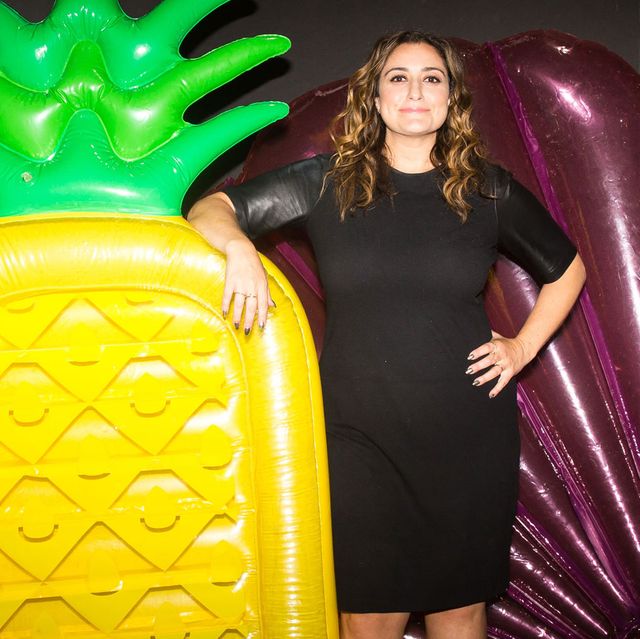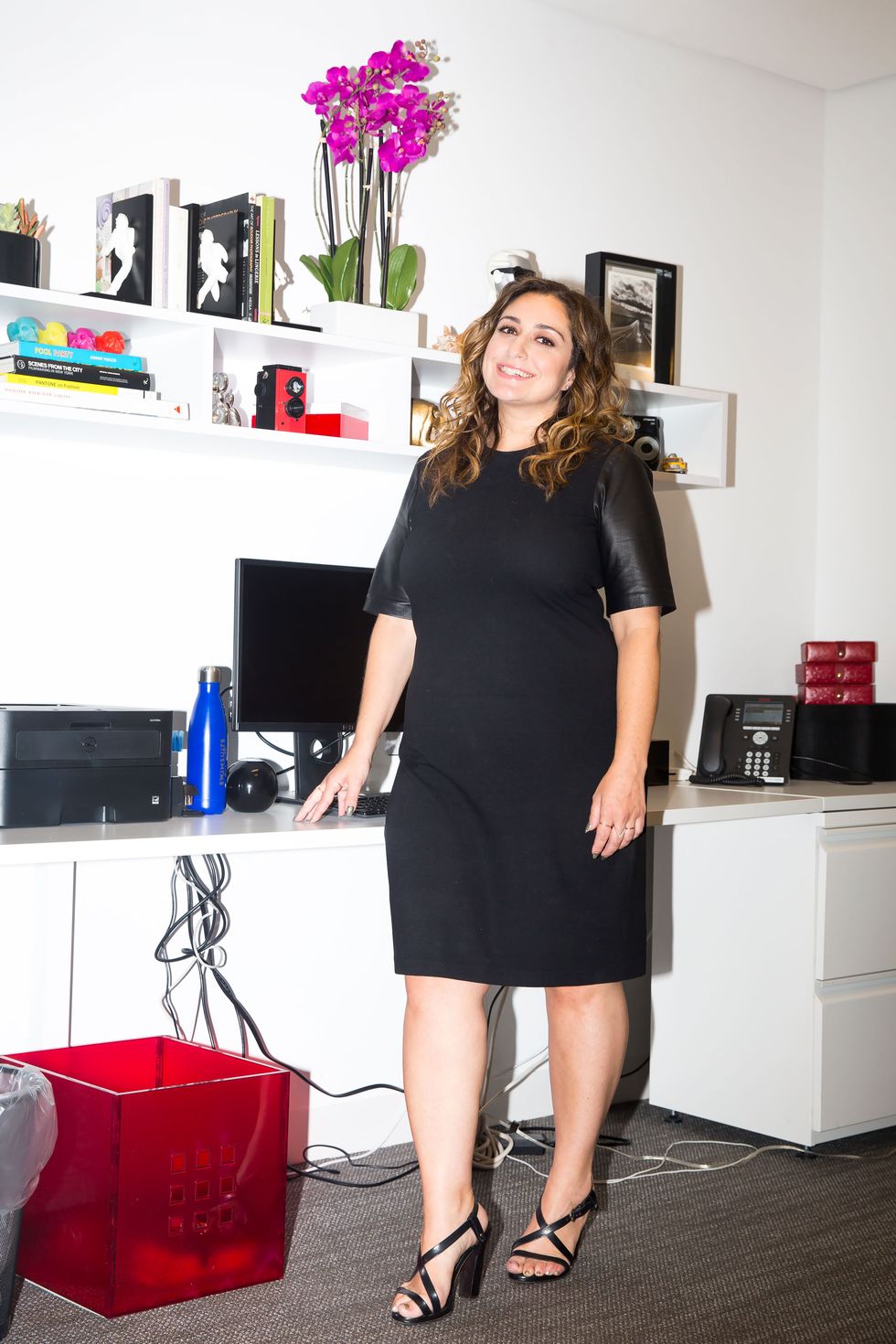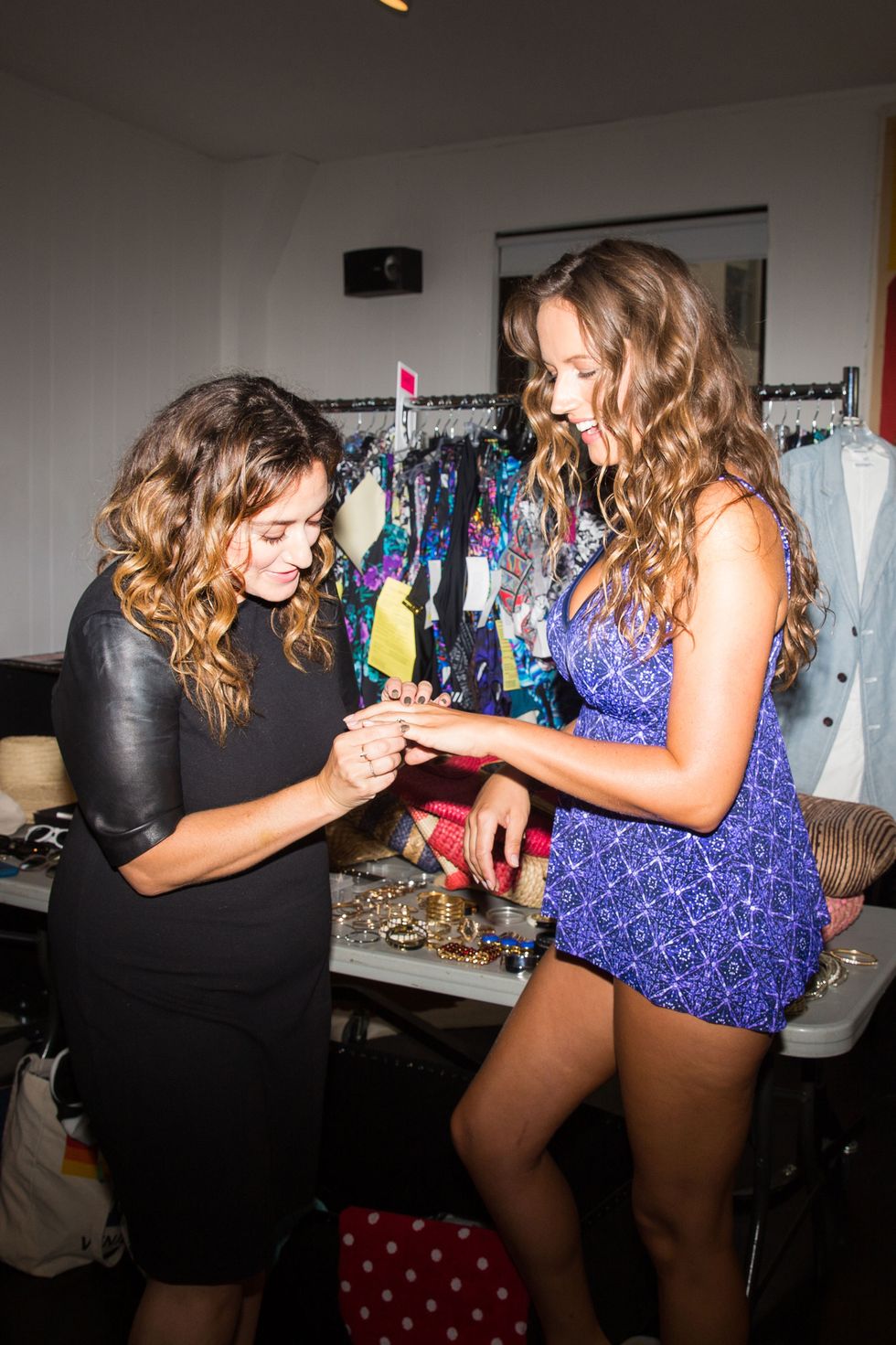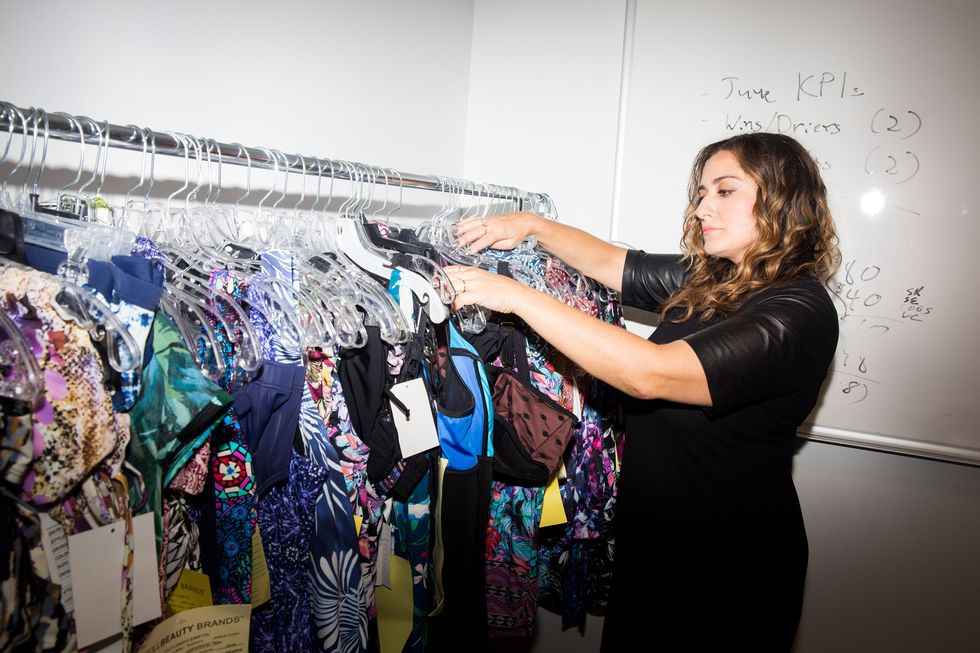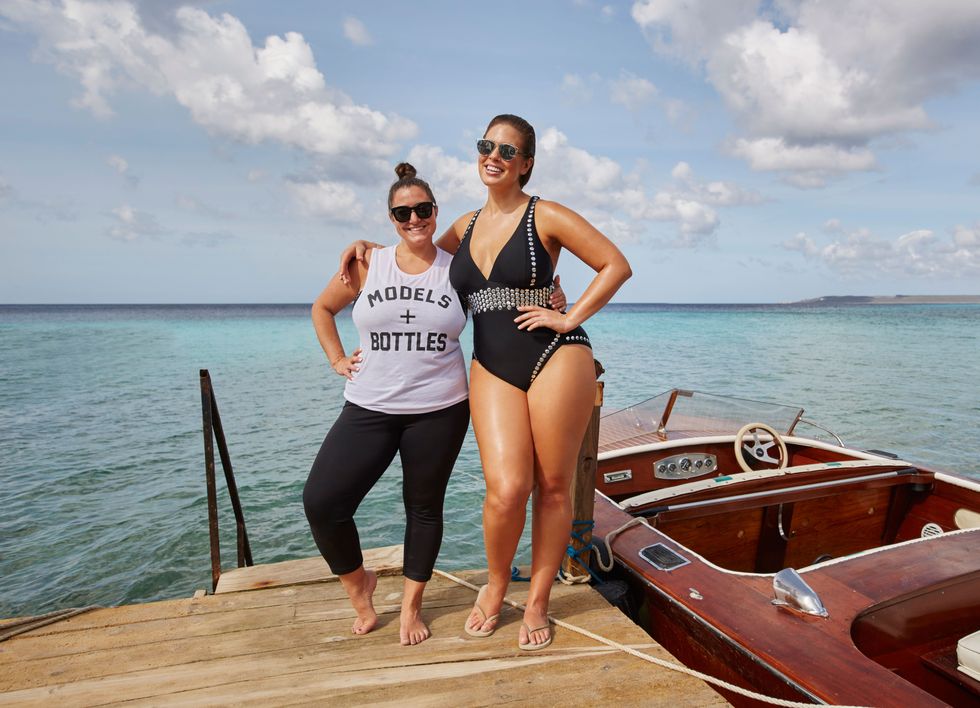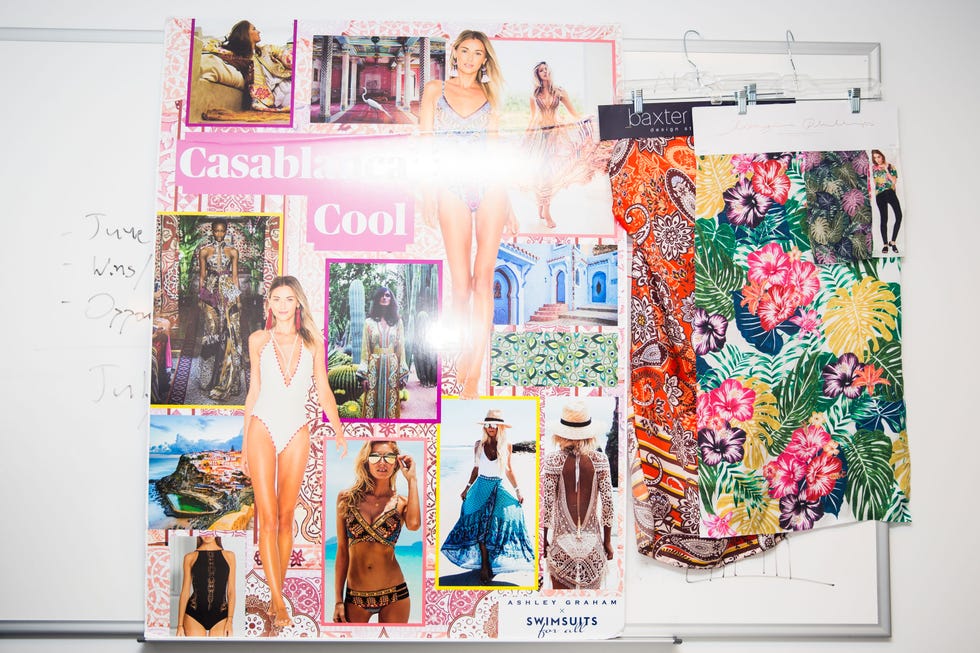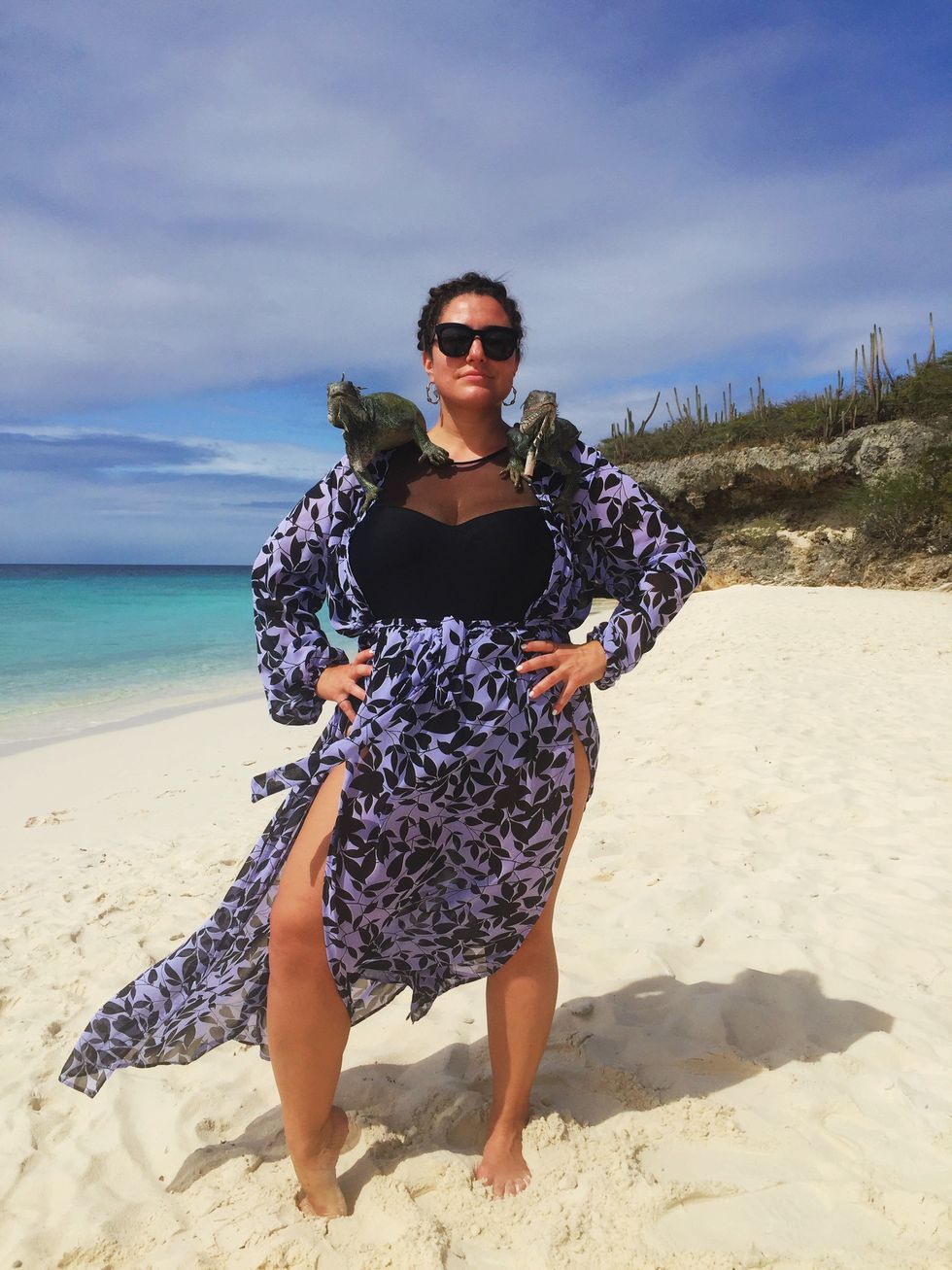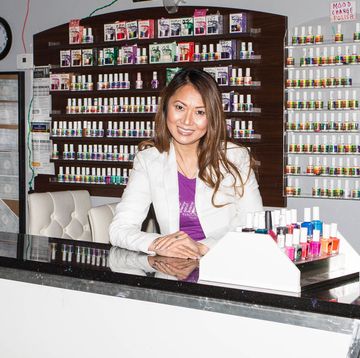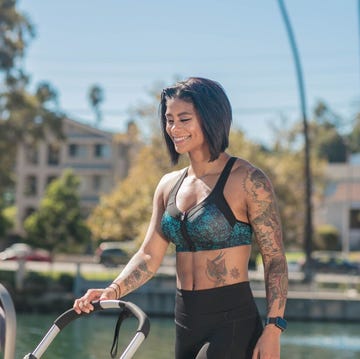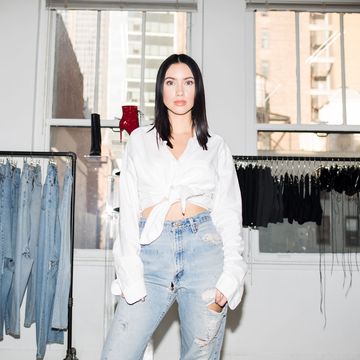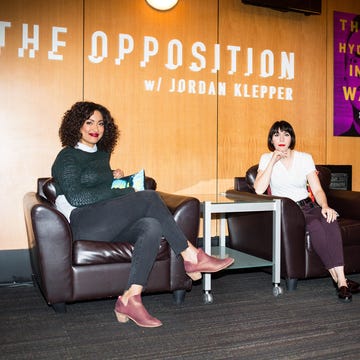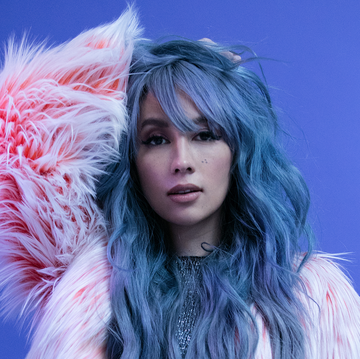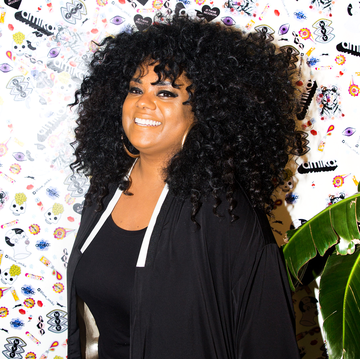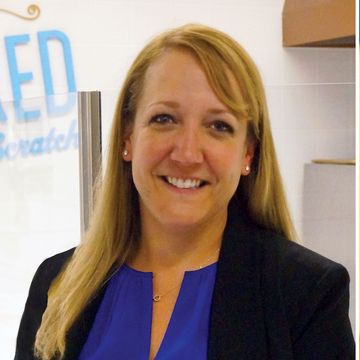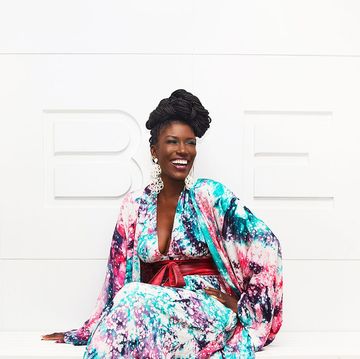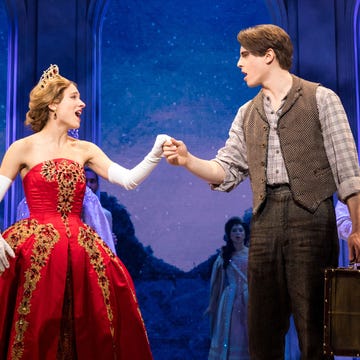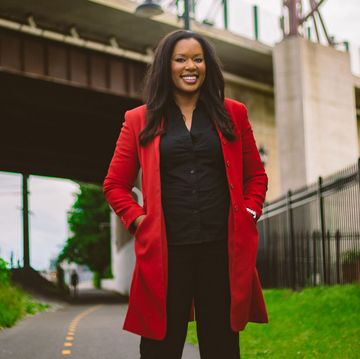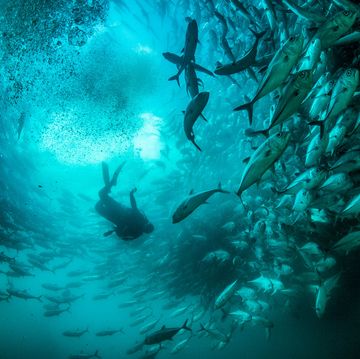Sara Mitzner's work is her life — and she likes it that way. The 34-year-old helped jumpstart the body positivity movement with her work as the VP of creative and branding at Swimsuits for All, a size-inclusive swimsuit brand. Here's how she made it to PRWeek's list of 40 Under 40 this year, and made a career for herself that doesn't feel like "just a job."
I’ve wanted to work in fashion since I was very young and started collecting subscriptions to every fashion magazine, and that continued through college. But I wasn’t educated in the different careers you could have and it didn’t seem practical, so I majored in English and minored in political science at the University of Michigan. I thought I was going to go to law school, so I had interned at a law firm during all of my summers in college. But while working on a law school application, I realized that I actually didn't want to be a lawyer.
So I decided to do a three-day magazine and book publishing seminar at the end of college and a book publishing program at NYU the summer after I graduated. They had a career day at the end, and I met with Hearst and Condé Nast HR, but nothing was really coming through because I had no experience. It’s very hard to get a job at a magazine, and a lot of people at the program had an advantage over me because they had interned every summer at magazines.
But at the end of summer 2005, I landed an editorial internship at Complex magazine through a family friend’s girlfriend, who was their associate photo editor. The following January, my best college friend’s aunt worked for Harpo and set me up with an interview for an editorial internship at O, The Oprah Magazine. I didn’t get it. But the managing editor heard my passion for fashion during the interview, and I ended up getting a fashion internship there instead. I worked in the closet unpacking the samples, assisting, doing administrative tasks, and filing all the lookbooks.
I loved the long hours and the hard work. When I worked at Complex I was paid a stipend and when I started at O I was paid minimum wage, so I was still living at home in Glen Rock, New Jersey back then. I would go into the city to work on the weekends because I loved it. There was one night that I missed my train connection and my parents were already asleep, so I slept in the Secaucus station and got on a train in the morning to go back to the city and keep working.
My personal life definitely took a backseat for a long time, but working is what I love to do the most, so it didn’t feel that way. It’s a little bit the nature of the industry, and it was fun. All my friends worked there and we all worked late together and went to events after work. That’s what my 20s were really about: establishing my career and working a lot because you don’t have those other family responsibilities. I did have some friends who were dating and working on their personal lives, and I woke up like, 10 years later and they were married and starting families and I was like Wait, what?
I went on a date once and I had to step away and take a call or do something work-wise. When I came back, they said, “Oh, they’re making you work on a Friday night?” And I said, "No one is making me work. We’re working on something I feel passionate about." I thought that was such an antiquated way to think about work. I’m lucky that what I like to do is a career that I can get paid for. I don’t really have other hobbies.
It wasn’t until I was an assistant at O that I was able to move out of my parents’ house, but I was only making like, $34,000 at first, so I went into a lot of debt. There are a lot of really beautiful, really wealthy people in fashion who dress amazing, and I bought into the whole lifestyle. This was before Rent the Runway, where you could just rent things to wear, and I wanted to wear high-end things to compete with some of these other editors. It took me a long time to get out of that debt.
Overall, I stayed at O for six and a half years. In late 2007, early 2008 when it would’ve been a natural time for me to move on to get experience at a different magazine or get an assistant editor job with more responsibility, the economy crashed, and magazines were folding left and right. No one was leaving anywhere because there were so many people out of work. It was the beginning of the death of print, and I saw it happen.
I stayed, but I started carving out different jobs for myself within my current position. For instance, no one was really covering the consumer electronics market, so I just started covering it. I don’t think I knew it at the time, but I was sort of future-proofing myself. Because when we started to do gift guides, I became an essential member of that team by covering that market. In order to stay in a competitive job, you have to make yourself indispensable.
I eventually was promoted to assistant editor, then by the time I left O I was the associate editor. I continued to get more markets while I was there, including outdoor clothes, hosiery — all the weird odds and ends — but also swim and plus-size.
A publicist I had worked with represented Catherine's, a plus-size business that at the time sold Swimsuits for All, and the woman at Catherine's mentioned Swimsuits for All was looking for someone to do marketing. It was a new business; I was only the 11th hire, and they were willing to give me a chance. At first I was like, I’ll spend a year here, I’ll get some business experience, and then I’ll move on to a more high profile brand. I didn’t tell anyone I worked there for a really long time. It wasn’t that I was embarrassed, I just didn’t know what it was, what it could be, and what it was going to be.
I started out doing strategic marketing and customer service, but within that first year when a position opened up for creative director, I spoke to Moshe Laniado, our CEO, about it and asked for a chance. I was shocked when I got it. I had no idea what I was doing. I felt like I could do it, but it was a very fake it ’til you make it kind of thing.
I called on some people that I had worked with on the real women stories at Oprah. But photographers and hair and makeup people all said they were not interested in shooting plus-size. Period. Someone actually told me they couldn’t shoot plus-size because they didn’t really know how to light someone that big. It was 2013, which was not that long ago.
After I did a few shoots, I was able to show those people the work, and they came around. Now it’s a totally different game. The body positivity movement started to happen and Swimsuits for All was a leader in making that happen. We started in a small way to really disrupt the industry and what it means to be sexy. We started crushing it with our editorials. We did a capsule with Gabi Fresh that had bikinis in it, and the website crashed, and the bikinis sold out within 24 hours. We were realizing there’s a woman out there who wants to wear bikinis and look sexy.
Moshe and I decided we needed to get involved with the Sports Illustrated swimsuit edition in 2015, but they don’t ever shoot plus-size, so it’s not like I could send samples and get one of my suits in the magazine. We instead decided to buy an ad in the issue and put a sexy plus-size girl in a bikini so we can be a part of the conversation. We did an open casting and booked Ashley Graham on that job. We definitely knew it would get talked about, but we weren’t trying to be antagonistic. They do amazing work, and they’ve created themselves as a huge culture moment in swim. When it came out, we couldn’t answer the phones fast enough for interview requests. She was on every TV show talking about it, and it was a game-changer for body positivity and Sports Illustrated. They ended up changing what they did the following year when they put Ashley on the cover.
Then we became known for doing really innovative work. The best things that we’ve created have happened organically. We shot this really beautiful, sexy video and photos of Denise Bidot on the beach, and when we got the film back, she looked so beautiful unretouched that we decided to release the photos as is. No one was doing that at the time. It was just a small last-minute thing — not a huge campaign — and the video now has over 2 million views.
We signed Ashley on contractually after the ad, and we shot real women as part of her campaign the next year. In the SI issue that she was on the cover on, we shot Ashley and a 56-year-old with silver hair in a bikini. What we’re trying to do is be Swimsuits for All, and that means inclusive of everyone. We don’t do anything as a gimmick. That’s just what we do, include women of different sizes and ages and races at every single shoot, period. Everything we do we believe in it as a core part of our brand values. It’s similar to my Oprah days where it’s a “live your best life” kind of message. I still feel like I’m able to do that, and I feel really lucky.
I’ve had about four titles since joining Swimsuits for All, but as the VP of creative and branding, I’m involved in social media, PR, creative, writing, graphic design, photography, and video. In January, we started selling size four (previously the sizes started at eight) and we’re going to continue to evolve the product and the fit and the size range and the styles we offer as well as create innovative campaigns.
It’s impossible for me to turn off the work part of my brain, but I also wouldn’t want it to. That’s one of the reasons I’m great at my job. There is absolutely no separation. There’s a quote that says, “In order to build a brand, you have to live it,” and I really try to live it. People always talk about work life balance and I do think that’s really important, but for me, there’s so much crossover and it blends to a gray in a really positive way. I don’t think balance means working this many hours and not working this many hours. I think it means you're doing everything that you want and should be doing to benefit your job. It benefits my job to keep doing things besides the day-to-day work but to always be sort of connected in a positive way.
Get That Life is a biweekly series that reveals how successful, talented, creative women got to where they are now.
